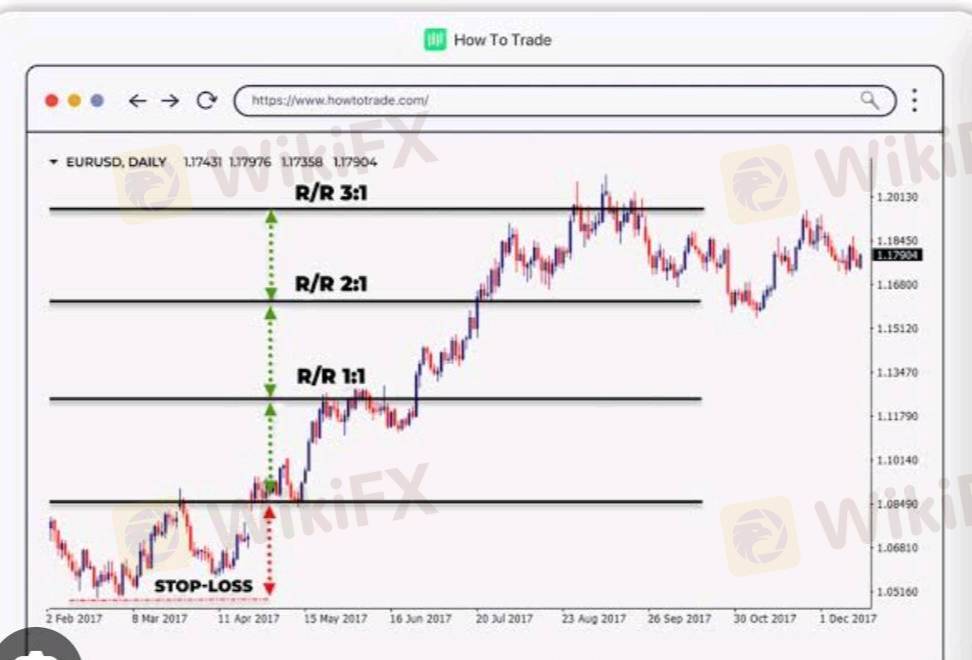
2025-02-06 04:04
業內Follow a risk reward ratio in forex trading.
#firstdealofthenewyearAKEEL
The risk-reward ratio (R:R) is a critical concept in forex trading, helping traders assess the potential reward for every unit of risk they take. Here's a guide to following an effective risk-reward ratio:
1.Define the Risk-Reward Ratio
The risk is the amount you're willing to lose on a trade.
The reward is the potential profit you're aiming to achieve.
A common ratio is 1:2, meaning for every $1 risked, you aim to make $2.
2.Set Your Stop-Loss and Take-Profit Levels
Use a stop-loss to limit your potential loss.
Set a realistic take-profit target based on market conditions and analysis.
Ensure the distance between your entry point and take-profit level is at least twice the distance to your stop-loss for a 1:2 ratio.
3.Analyze Market Conditions
Identify key support and resistance levels to place your stop-loss and take-profit.
Ensure the potential reward is achievable based on the market's volatility and trend.
4.Avoid Chasing Trades
Do not enter trades where the risk-reward ratio doesn't meet your criteria, even if the trade looks promising.
Be disciplined in rejecting trades that fall below your target ratio.
5.Use Consistent Position Sizing
Never risk more than 1-2% of your trading account on a single trade.
Adjust your lot size based on the stop-loss distance and your risk percentage.
6.Review and Adjust as Needed
Analyze your trading journal to ensure you're consistently following your risk-reward ratio.
Fine-tune your strategy if the ratio is not yielding expected results in specific market conditions.
Examples of Risk-Reward Ratios
1:1 - Minimum acceptable for some strategies but provides little margin for error.
1:2 - Common standard, balancing risk and reward.
1:3 or higher - Preferred for trend-following strategies but may require more patience.
By adhering to a sound risk-reward ratio, you can minimize losses, maximize profits, and maintain long-term profitability in forex trading.
#firstdealofthenewyearAKEEL
贊 0
Mky9196
交易者
熱門討論
業內
哎,现在明白不赌就是赢啊
行情分析
美元/加元技术面
技術指標
外汇技术分析之波浪理论
業內
[活動]論交易,贏取200元話費補貼
技術指標
EZ.Fury Kite是基于趋势指标MA进行判断
技術指標
指标派是什么?
市集分類

平臺

展會

代理商

招聘

EA

業內

行情

指標
Follow a risk reward ratio in forex trading.
 尼日利亞 | 2025-02-06 04:04
尼日利亞 | 2025-02-06 04:04#firstdealofthenewyearAKEEL
The risk-reward ratio (R:R) is a critical concept in forex trading, helping traders assess the potential reward for every unit of risk they take. Here's a guide to following an effective risk-reward ratio:
1.Define the Risk-Reward Ratio
The risk is the amount you're willing to lose on a trade.
The reward is the potential profit you're aiming to achieve.
A common ratio is 1:2, meaning for every $1 risked, you aim to make $2.
2.Set Your Stop-Loss and Take-Profit Levels
Use a stop-loss to limit your potential loss.
Set a realistic take-profit target based on market conditions and analysis.
Ensure the distance between your entry point and take-profit level is at least twice the distance to your stop-loss for a 1:2 ratio.
3.Analyze Market Conditions
Identify key support and resistance levels to place your stop-loss and take-profit.
Ensure the potential reward is achievable based on the market's volatility and trend.
4.Avoid Chasing Trades
Do not enter trades where the risk-reward ratio doesn't meet your criteria, even if the trade looks promising.
Be disciplined in rejecting trades that fall below your target ratio.
5.Use Consistent Position Sizing
Never risk more than 1-2% of your trading account on a single trade.
Adjust your lot size based on the stop-loss distance and your risk percentage.
6.Review and Adjust as Needed
Analyze your trading journal to ensure you're consistently following your risk-reward ratio.
Fine-tune your strategy if the ratio is not yielding expected results in specific market conditions.
Examples of Risk-Reward Ratios
1:1 - Minimum acceptable for some strategies but provides little margin for error.
1:2 - Common standard, balancing risk and reward.
1:3 or higher - Preferred for trend-following strategies but may require more patience.
By adhering to a sound risk-reward ratio, you can minimize losses, maximize profits, and maintain long-term profitability in forex trading.
#firstdealofthenewyearAKEEL
贊 0
我也要評論
提問
0條評論

還沒人評論,趕緊搶佔沙發

提問
還沒人評論,趕緊搶佔沙發